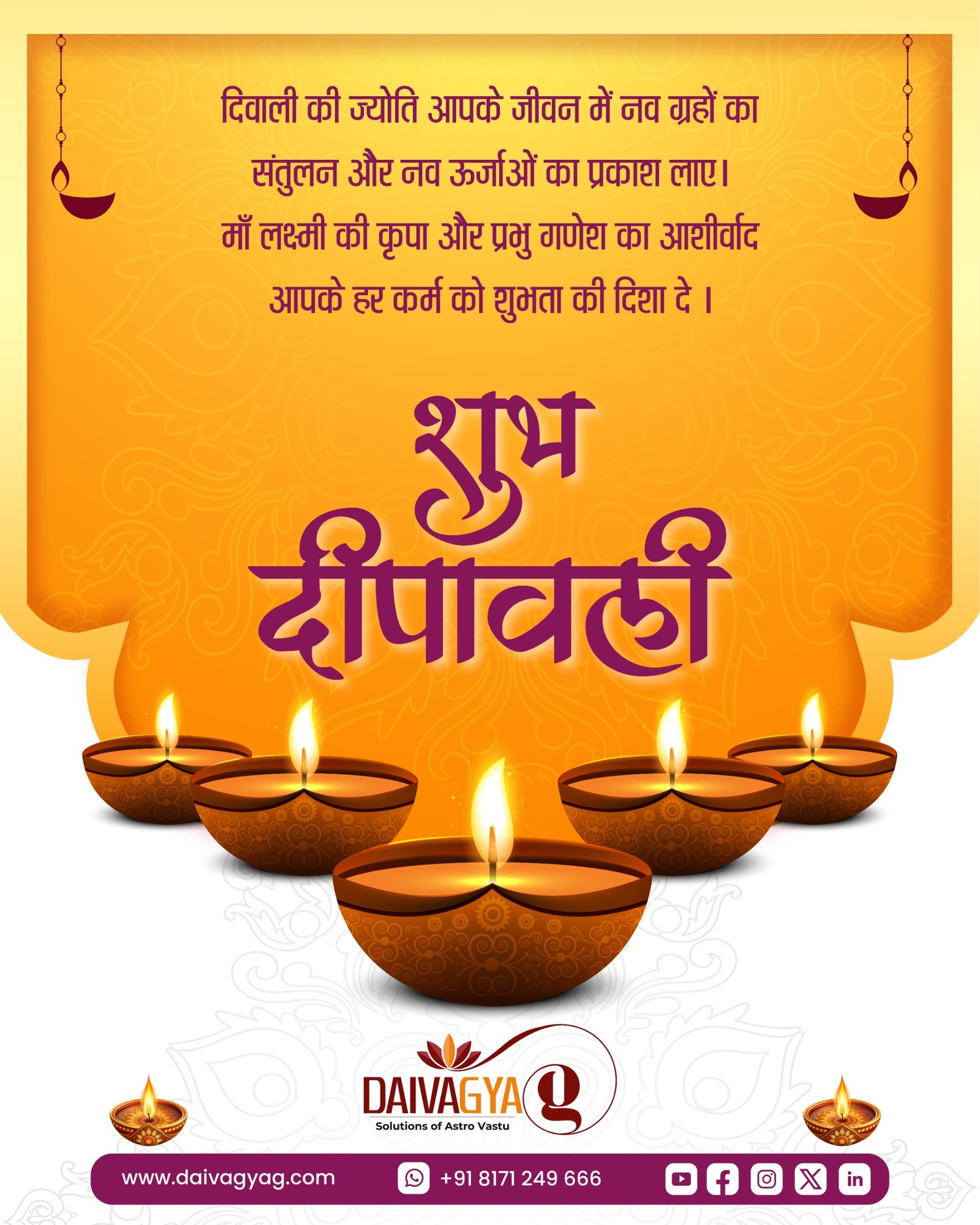The Deeper Meaning of Diwali: Vastu, Astrology, and Spiritual Awakening

Introduction: The Festival of Light, Energy, and Renewal
Diwali, the Festival of Lights, is not merely a celebration of prosperity—it is an ancient spiritual science that harmonizes cosmic energies, human emotions, and earthly elements. Every diya lit, every color chosen, and every prayer offered during Diwali holds profound astrological and psychological meaning. Let’s explore the deeper dimensions of Diwali through the lenses of Vastu Shastra, astrology, and spirituality.
Vastu Enhancement During Diwali
Diwali is the most auspicious time to correct and recharge the energy flow of your home. According to Vastu Shastra, cleansing the north and east directions, placing lamps in the southeast (Agni corner), and keeping the main entrance illuminated attract positive cosmic vibrations. Removing clutter and using fragrances like camphor or sandalwood purifies the air element and removes stagnation—opening the space for wealth and harmony to enter.
The Science Behind Lakshmi Puja
Lakshmi Puja is not only a ritual—it’s a psychological and energetic alignment with abundance. The vibrations created by mantra chanting, ghee lamps, and specific timings (muhurta) resonate with Venus and Moon energies, planets governing wealth and emotional balance. Performing the puja with gratitude, cleanliness, and focus aligns your subconscious mind with the universal frequency of prosperity.
Diwali and the Balance of Panch Tattva (Five Elements)
Each element—Earth, Water, Fire, Air, and Space—plays a role in shaping our environment and inner balance. Diwali rituals naturally harmonize these:
-
Fire (Agni): Diyas purify negative energies.
-
Water (Jal): Cleaning and washing symbolize emotional cleansing.
-
Earth (Prithvi): Rangoli and decorations stabilize energy.
-
Air (Vayu): Fragrances enhance mood and positivity.
-
Space (Akash): Prayers and mantras elevate consciousness.
When the Panch Tattva are in harmony, the home becomes a magnet for prosperity and peace.
The Psychological Secret of Lighting Diyas
Lighting lamps triggers a deep psychological response—it symbolizes hope, clarity, and self-awareness. The soft glow of the diya calms the nervous system, while the ritual of lighting multiple lamps strengthens the subconscious belief in abundance. Scientifically, it reduces stress by activating the parasympathetic nervous system, fostering feelings of safety and optimism.
Colors and Lights: The Psychology of Diwali Decoration
Colors influence emotions and vibrations. Golden, red, and yellow hues represent vitality and optimism; blue and white bring peace and clarity. The bright illumination during Diwali enhances serotonin levels, invoking happiness and enthusiasm. According to color therapy, such an atmosphere directly uplifts mood and invites divine energy.
The Tradition of Gambling – Truth and Myth
The Diwali custom of playing cards or dice stems from ancient beliefs that Goddess Parvati played dice with Lord Shiva, blessing the day with luck. However, this tradition was symbolic—reminding humans that destiny favors the courageous but tests the wise. The real “game” is mastering self-control and awareness, not material gain.
Kuber Sadhana for Financial Growth
On the night of Diwali, performing Kuber Sadhana amplifies wealth vibrations. Lord Kuber, the treasurer of the gods, represents disciplined prosperity. Chanting “Om Hreem Shreem Hreem Kuberaya Namah” with focus and sincerity helps in attracting stable, righteous wealth. Place a silver coin or Kuber yantra in the north direction during the puja for enhanced results.
Astrological Resolutions for the New Year
Just as the business year restarts after Diwali, so does the spiritual calendar. Analyzing one’s birth chart (Janma Kundali) to understand planetary transits can guide new beginnings. It’s the ideal time to set intentions for health, finances, and relationships aligned with your planetary strengths—turning Diwali into a cosmic renewal ritual.
Self-Reflection and Spiritual Reawakening After Diwali
When the lights fade and silence returns, it’s time for Atmachintan—self-reflection. The real essence of Diwali lies in conquering inner darkness—anger, ego, and greed—and igniting the eternal flame of wisdom. Spiritual awakening after Diwali leads to lasting happiness and true prosperity that no external wealth can match.
Written by
Dr. Dev Swarup Shastri
Spiritual Guide, Astrologer & Vedic Science Expert
Dedicated to helping seekers achieve prosperity, peace, and balance through ancient Vedic wisdom, Dr. Shastri bridges timeless traditions with modern living for a life filled with harmony and success.

